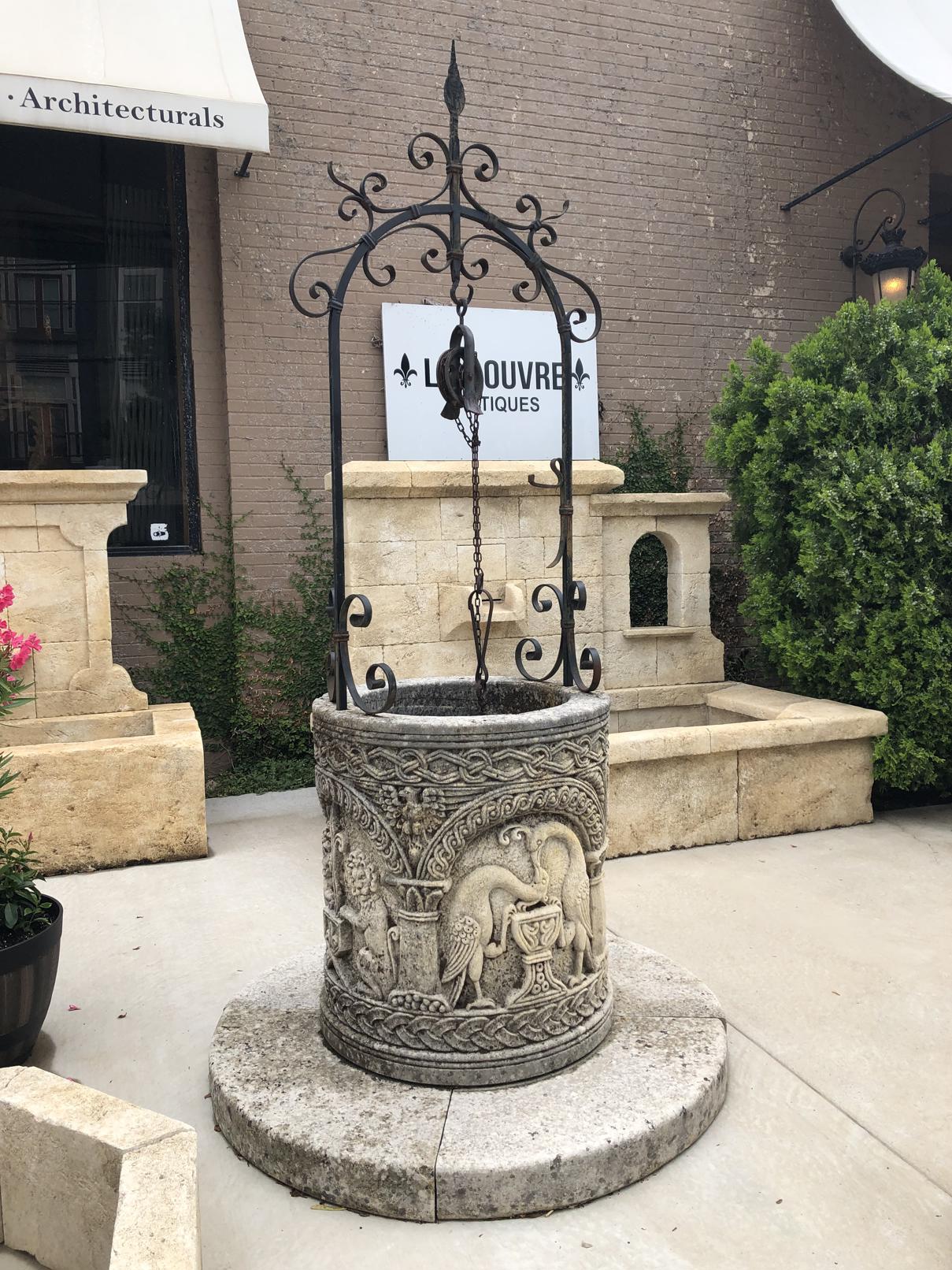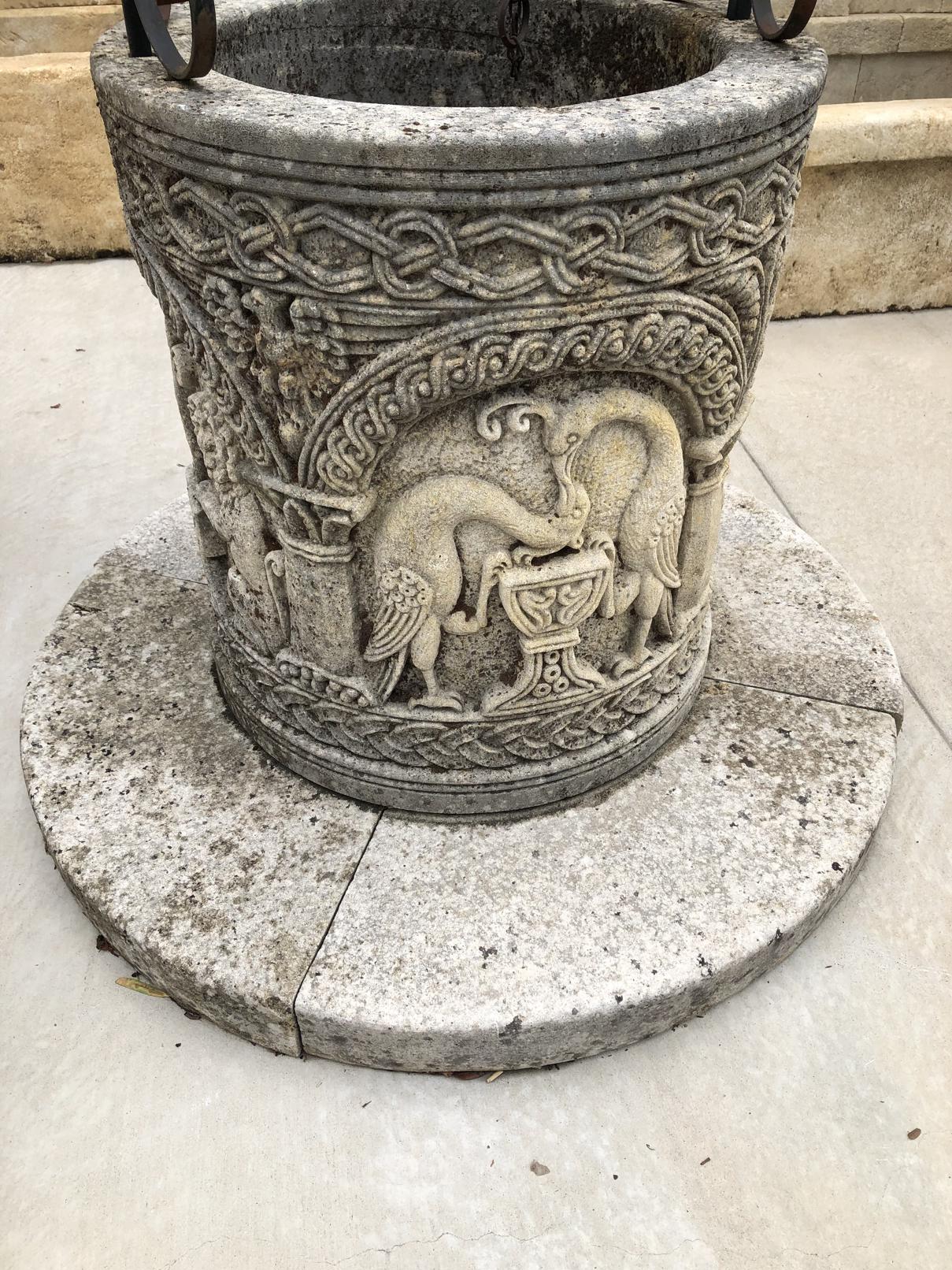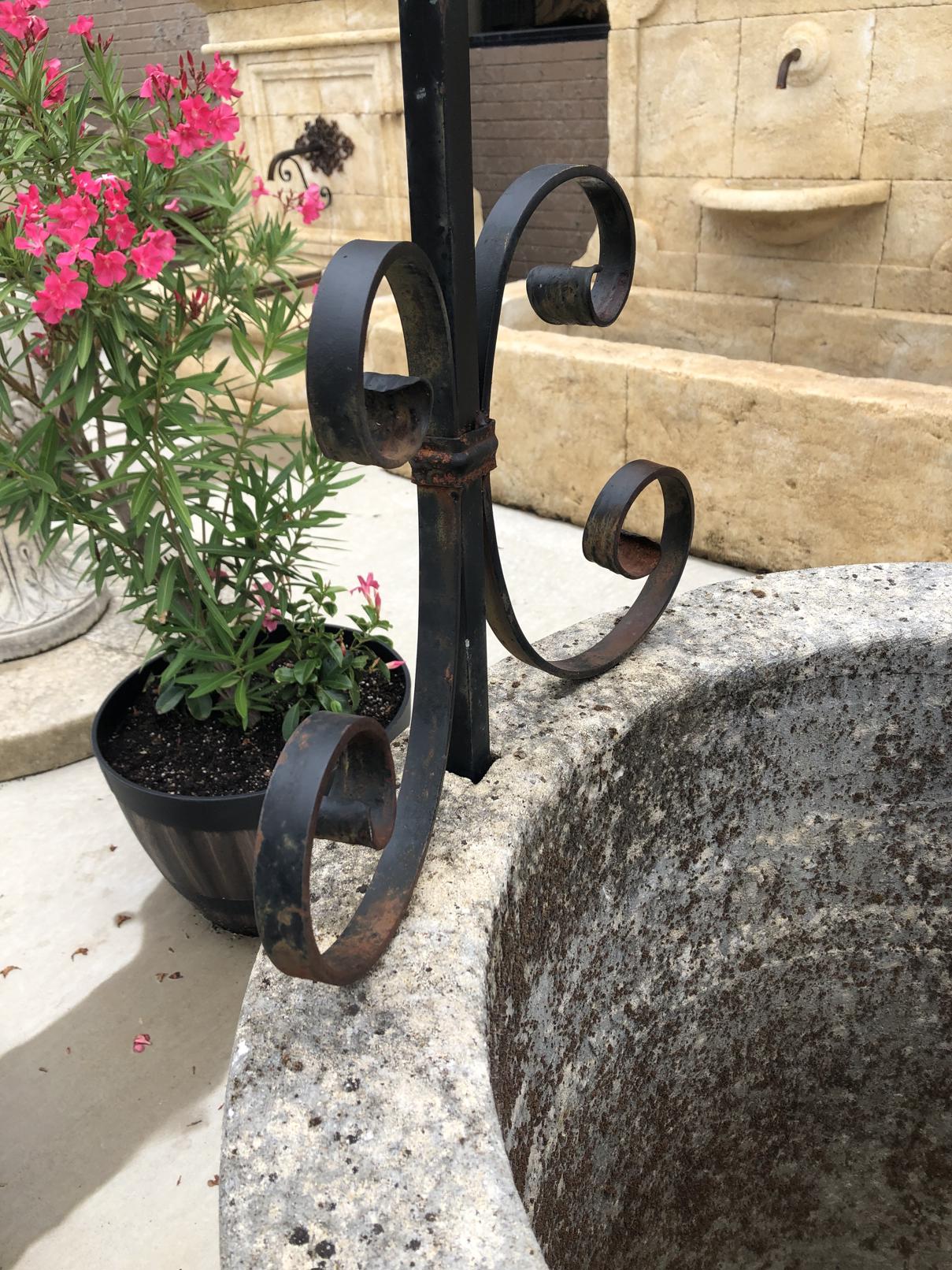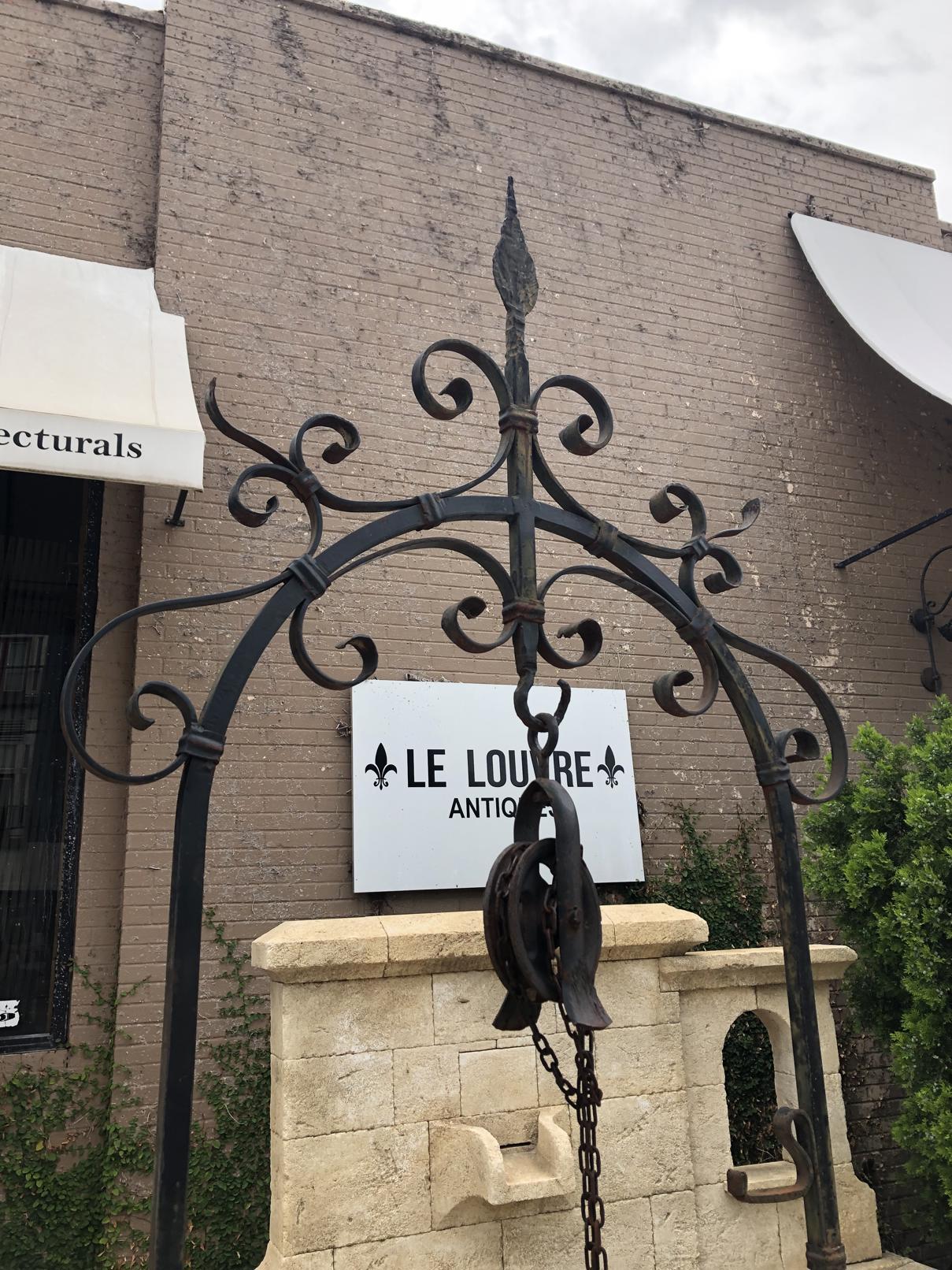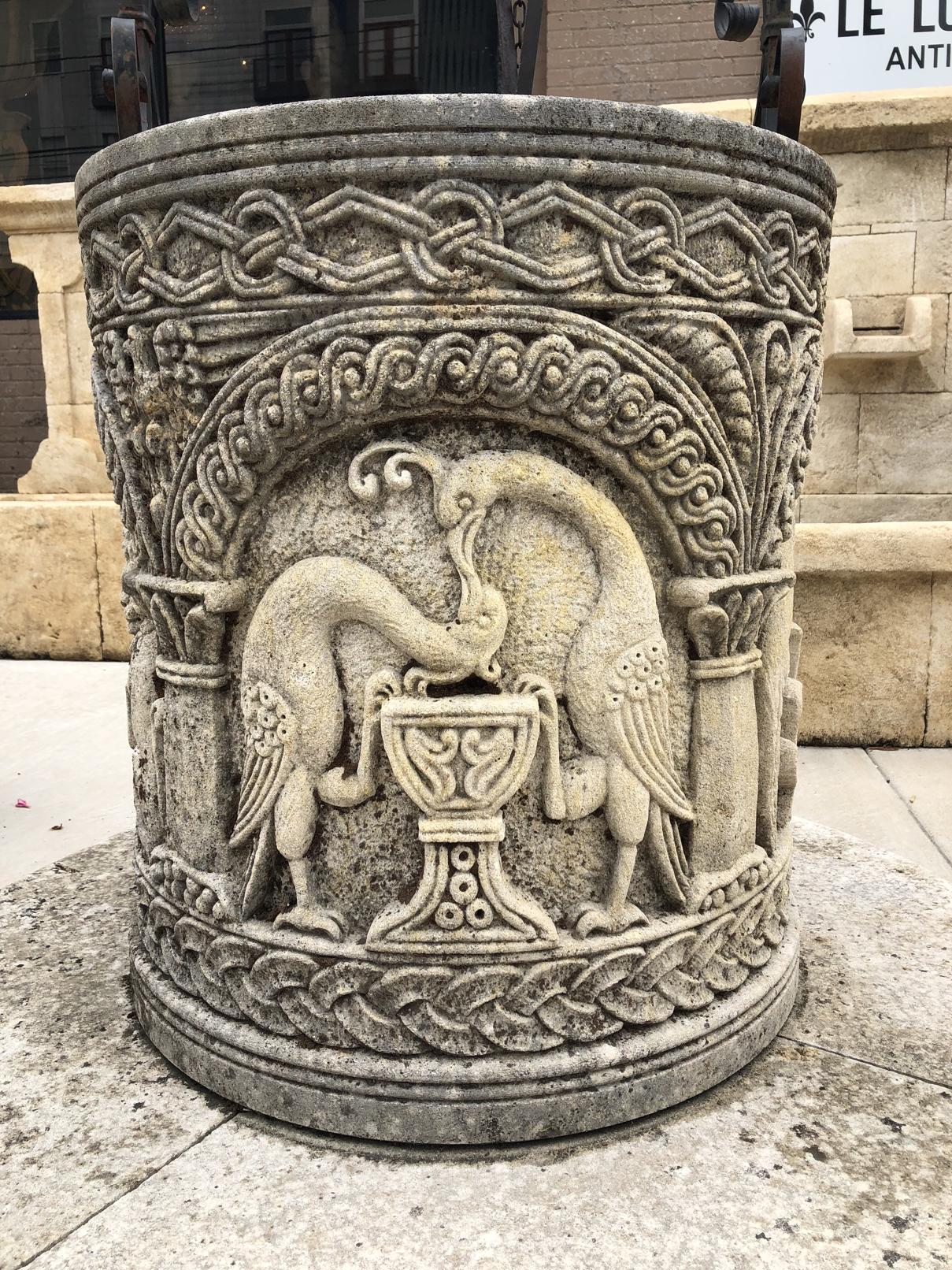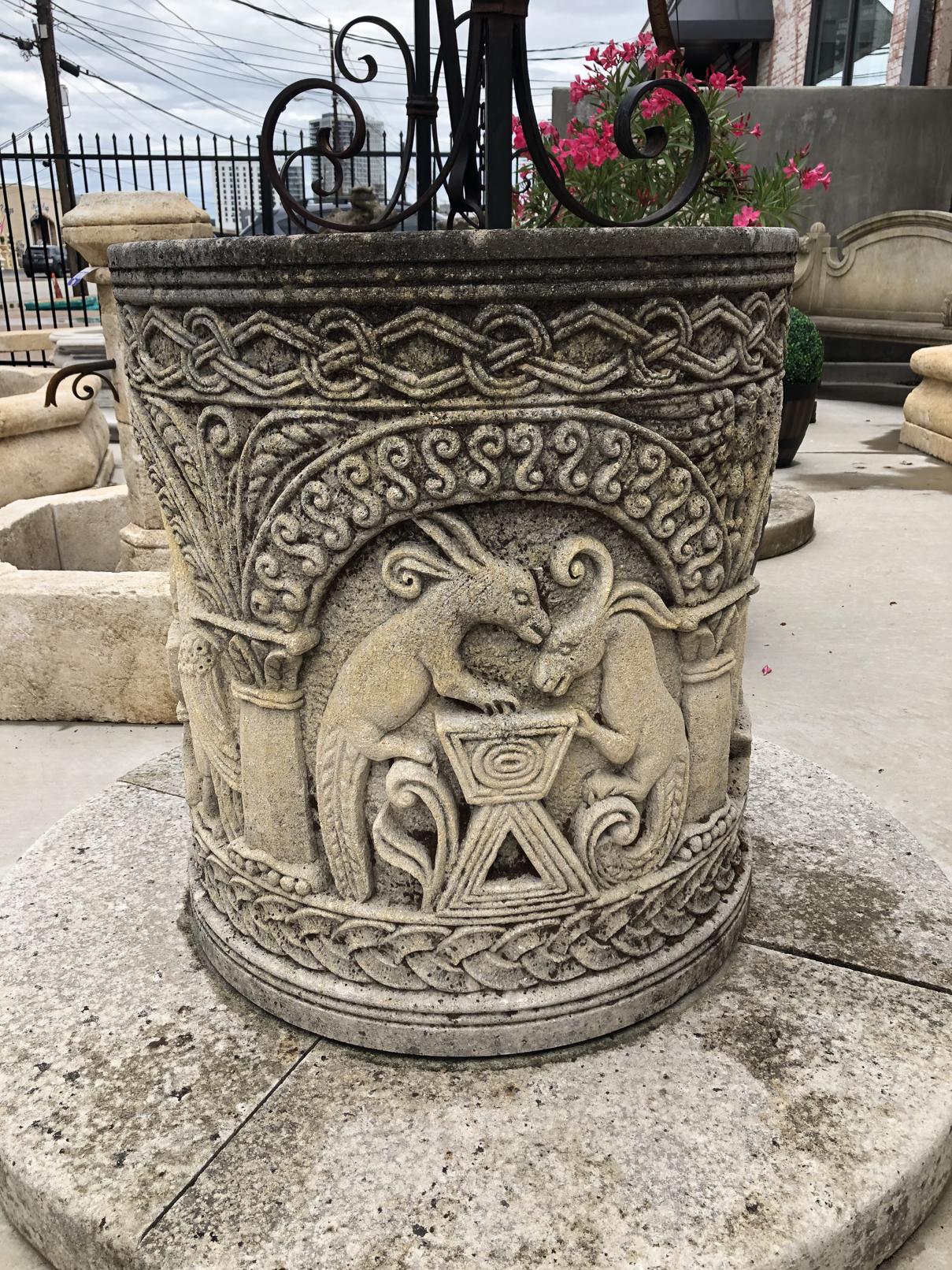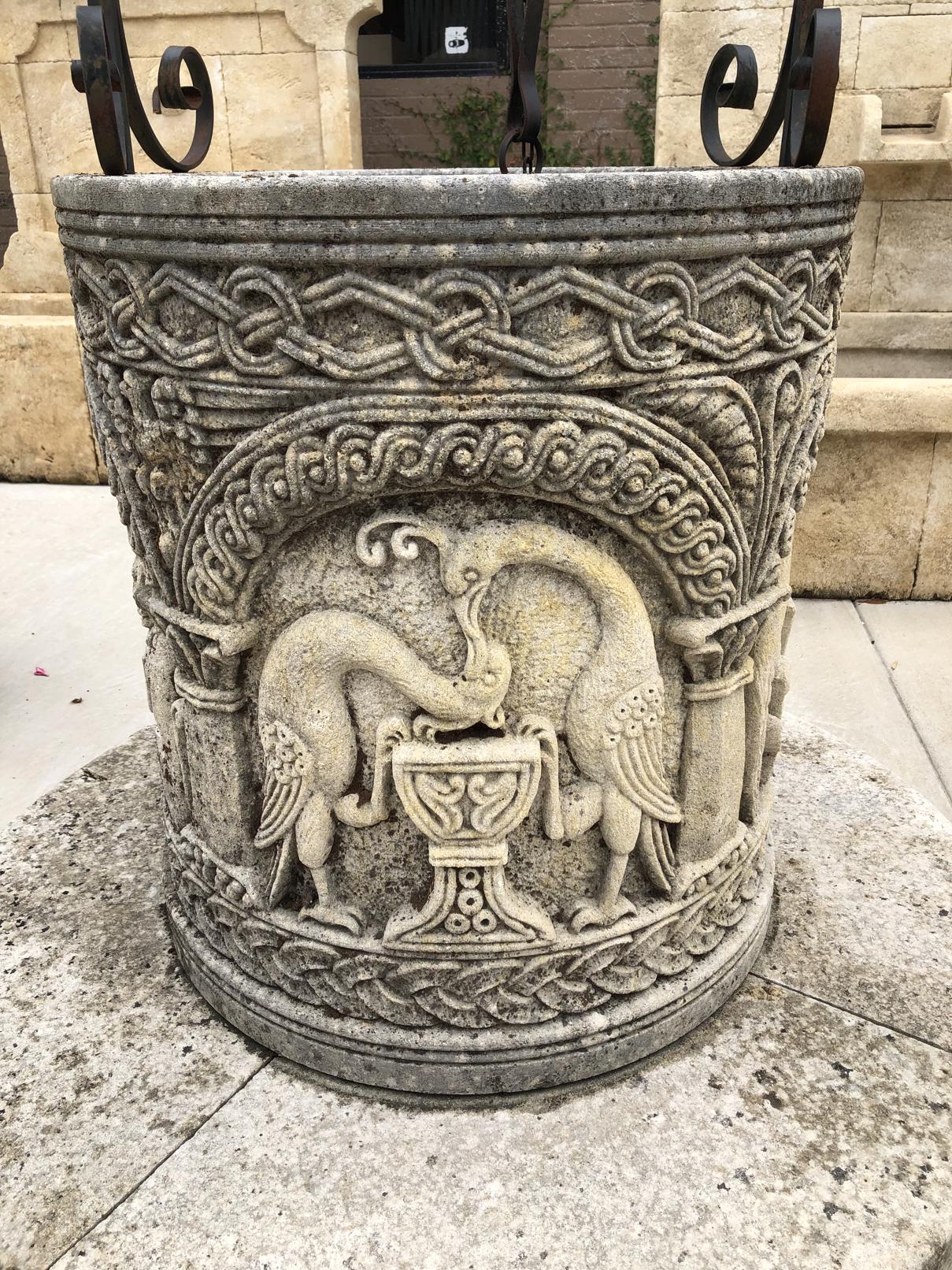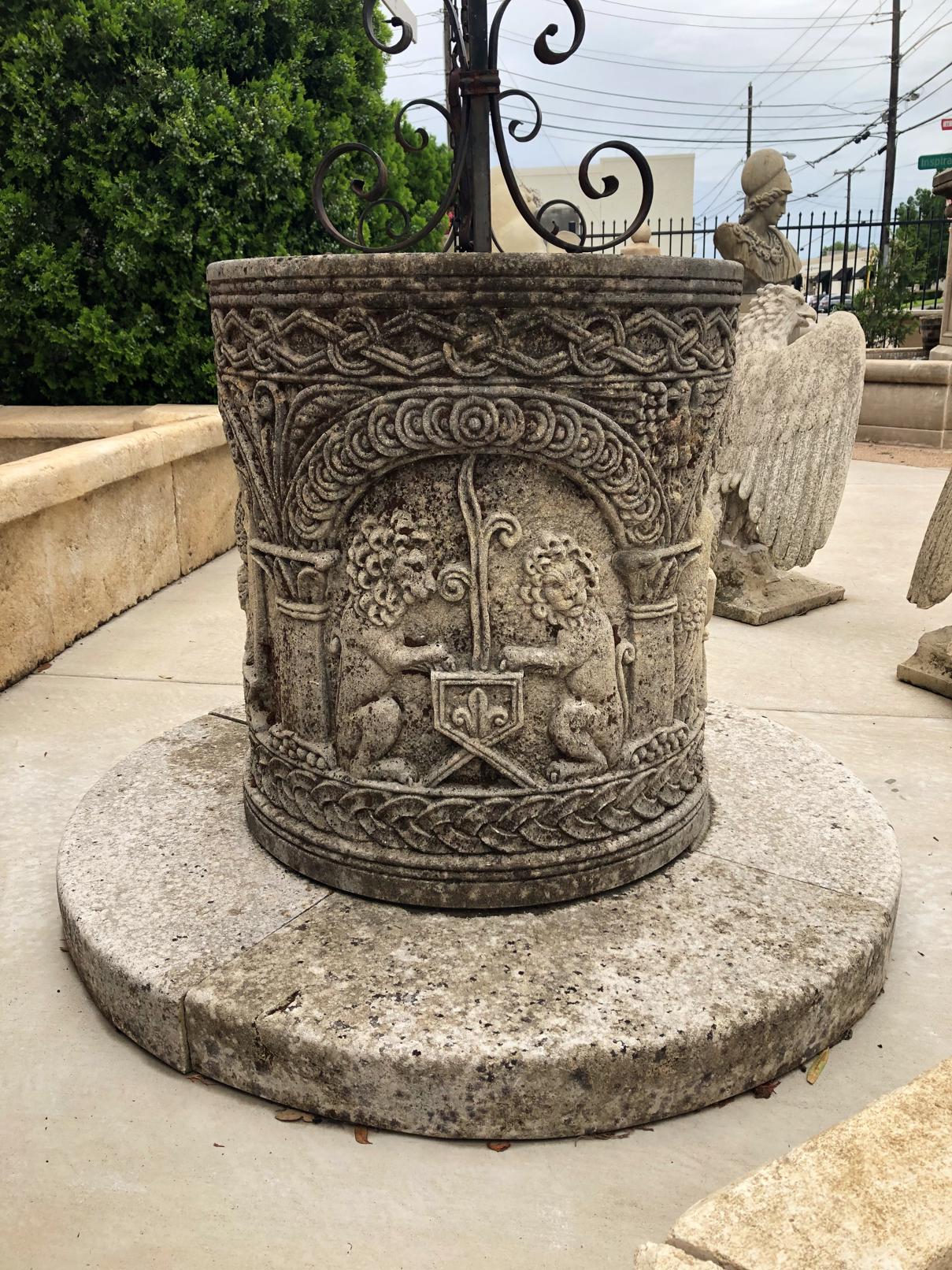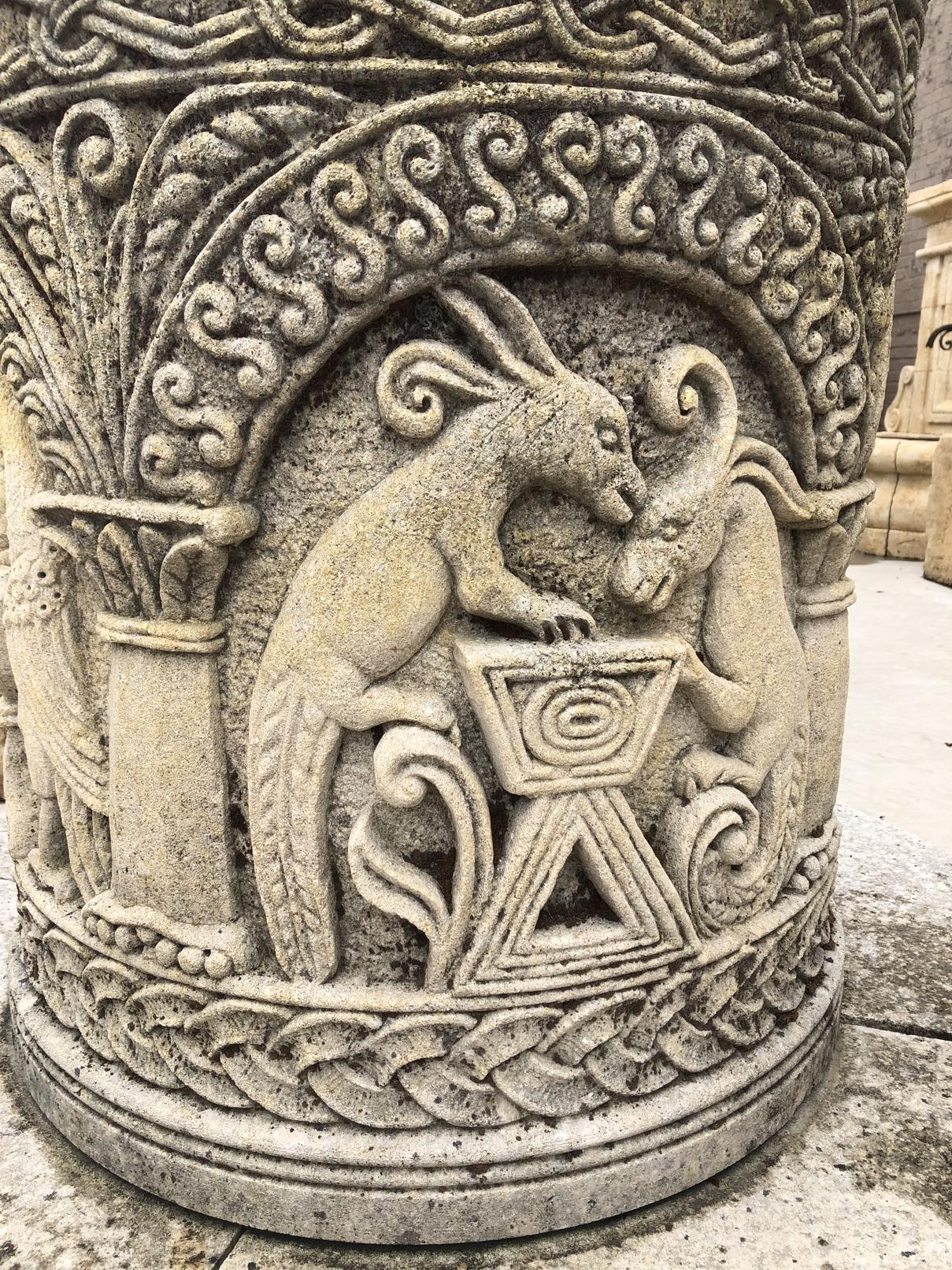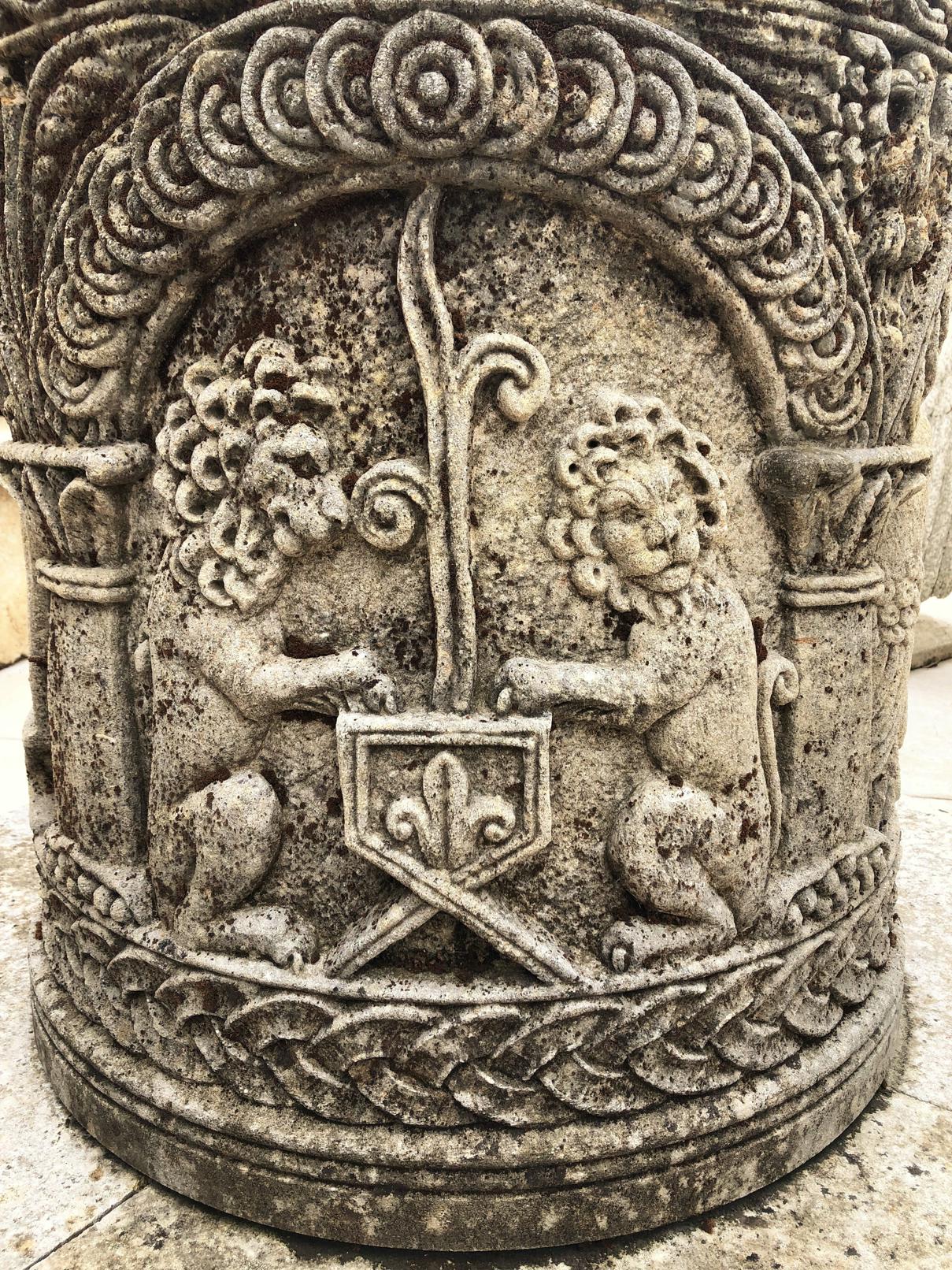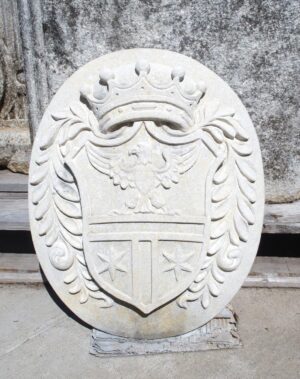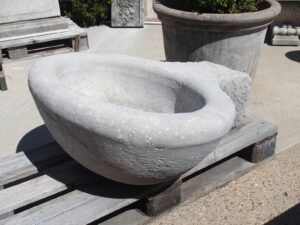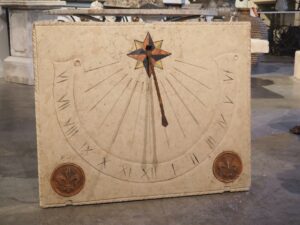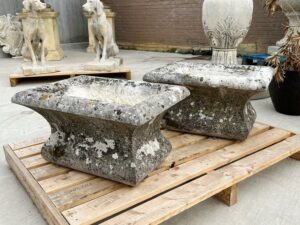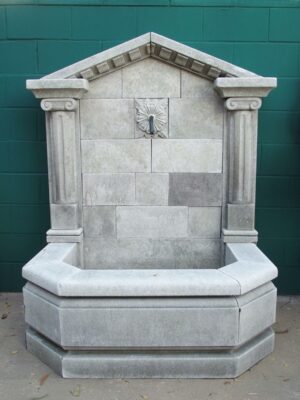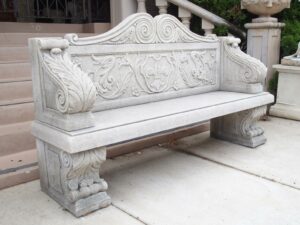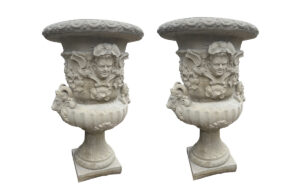Hand-carved in the middle Byzantine style (which corresponds to Western Europe’s Medieval period), this highly detailed wellhead from Italy has a large, elaborate iron overthrow that rises over five feet above the top of the well. The overthrow features a pointed finial set amongst a beautiful display of C- and S-scrolls that form stylized fleur de lys. At the base of the finial is a ceremonial (and removable) pulley, complete with a hook for a pail attachment.
Beneath the pulley is the 22-inch opening of the wellhead. Along the top edge of the outside, there are three layers of molding above a carved interlaced pattern featuring lozenges and roundels. A similar molding can be found at the base of the circular well, which sits on four margin stones that form a larger circle. The repeating pattern above the lower molding is a braided motif.
In between the two geometric borders is a set of four niches with unfluted columns. The arches are adorned with unconnected S-scrolls that stretch between a pair of caulicole capitals. Each niche has been filled with a combination of geometric shapes and animals. During the Byzantine Iconoclasm (roughly 726-842), Emperor Leo III banned all religious figures from art and architecture, resulting in a greater appearance of symbolic animals and mythical creatures, as seen on the body of our wellhead. The carved animals include two mythical creatures standing next to a geometric pedestal, an eagle with wings spread (a symbol of the Byzantine Empire), two rampant lions with a fleur de lys planter, and two long-necked birds with a goblet-shaped pedestal.
The gray-colored limestone of our Byzantine style wellhead has developed a lovely cream patina in some areas. It would make a fantastic addition to any outdoor setting or courtyard as a garden ornament. The wellhead could also be converted in a large planter and displayed without the iron overthrow.
CONDITION: Good condition with minor nicks, scratches, and buildup to stone. Light paint losses to iron, resulting in oxidation. Traces of moss and lichen, especially along the interior. Stone is a natural material that can change color with exposure to the elements.


